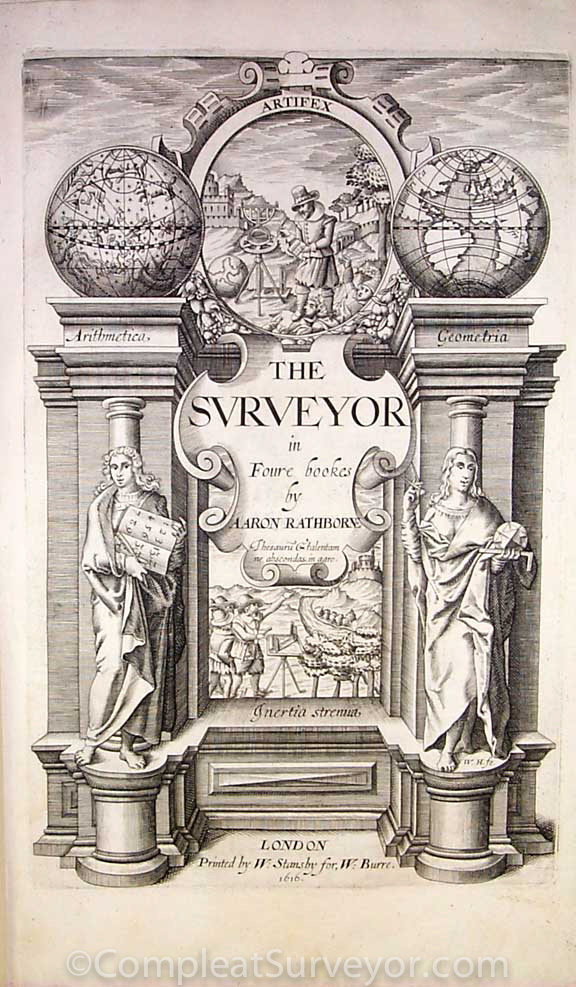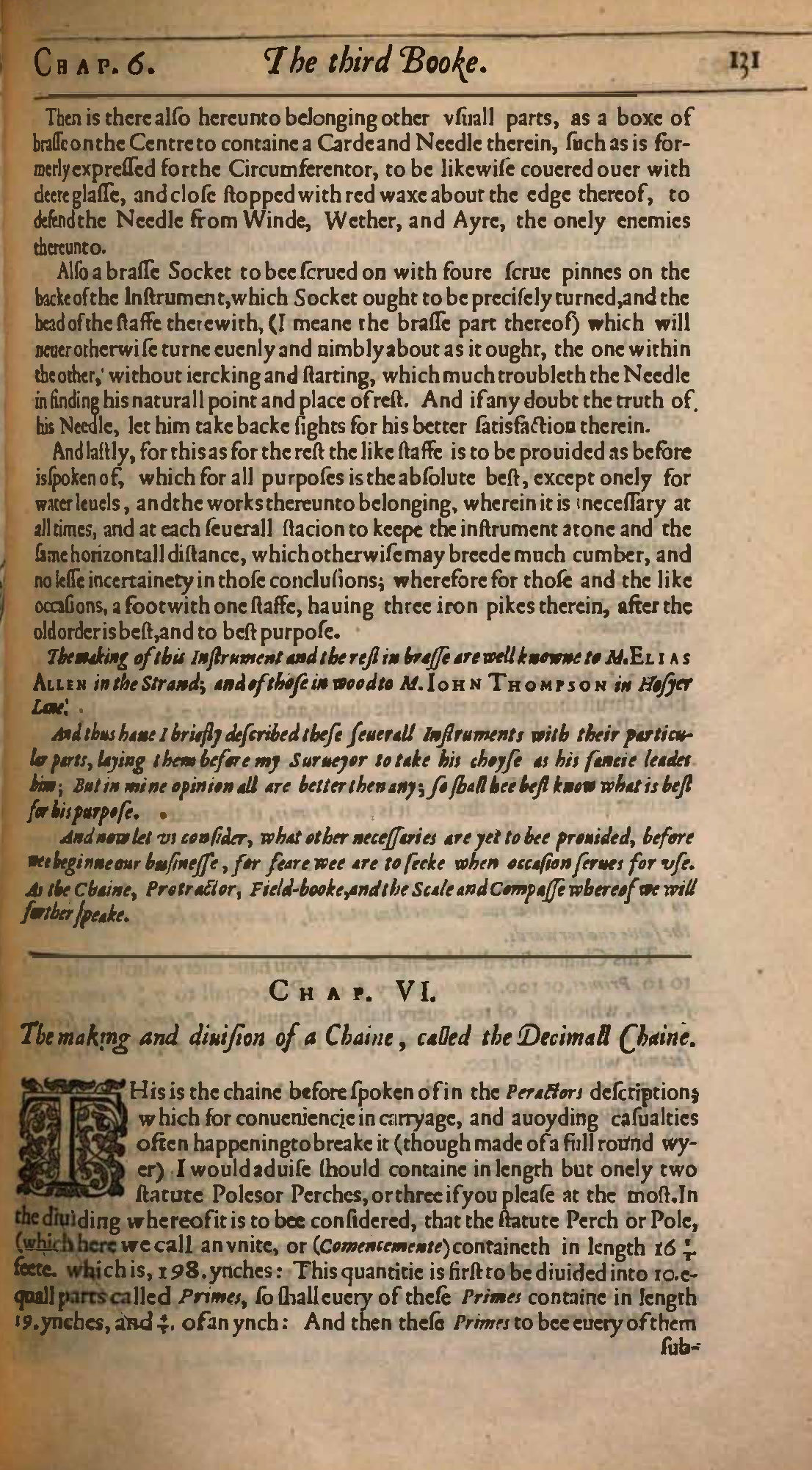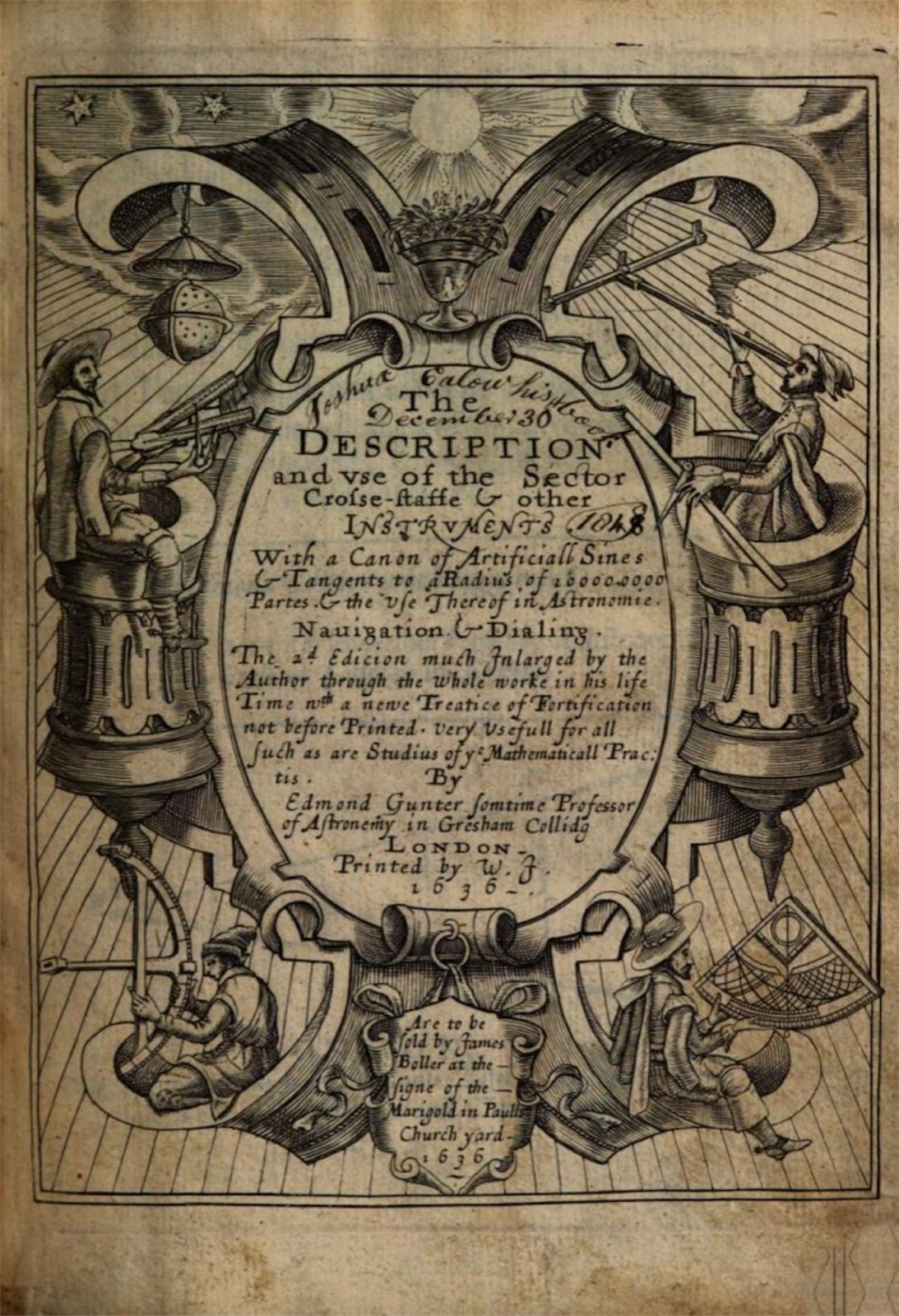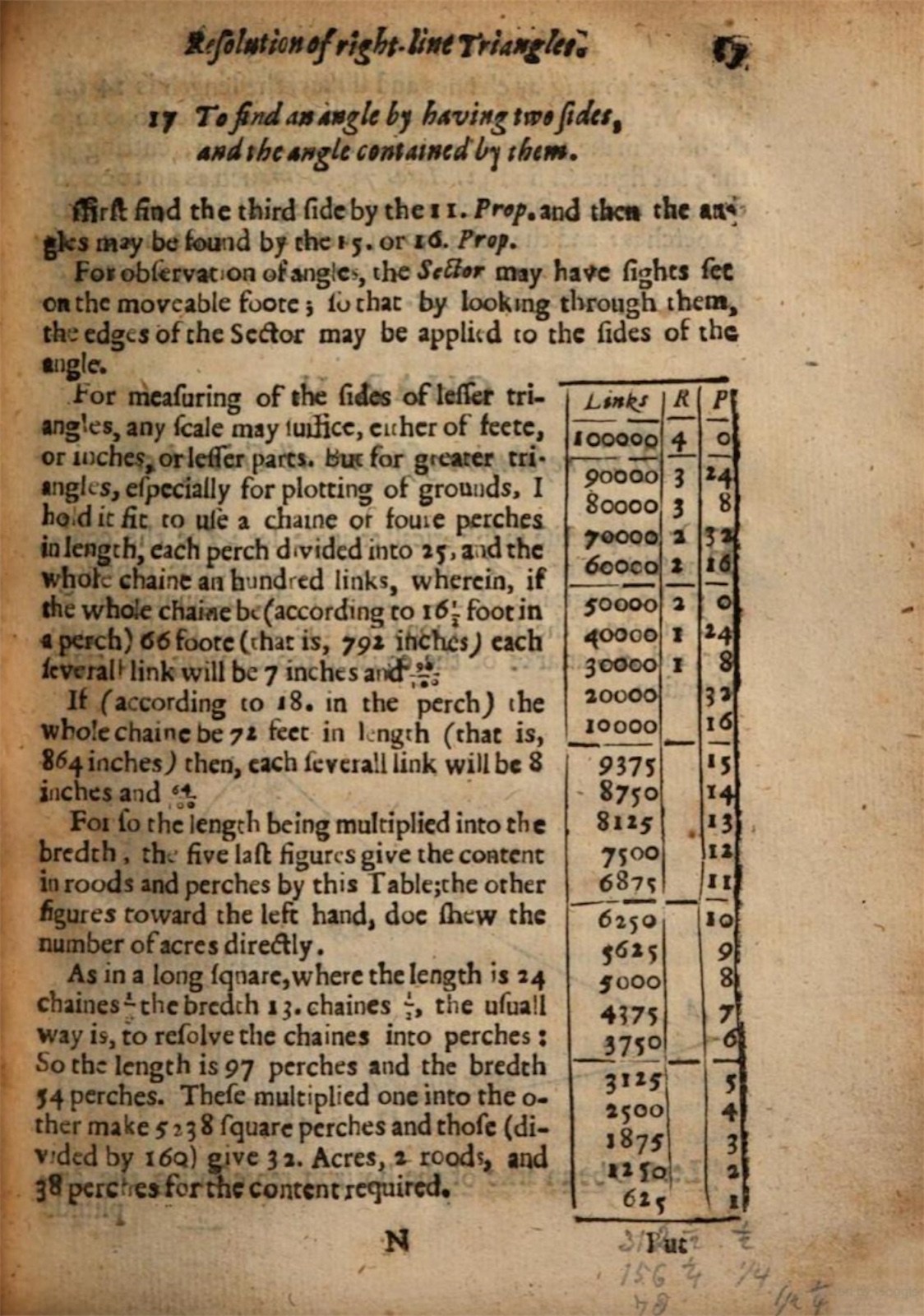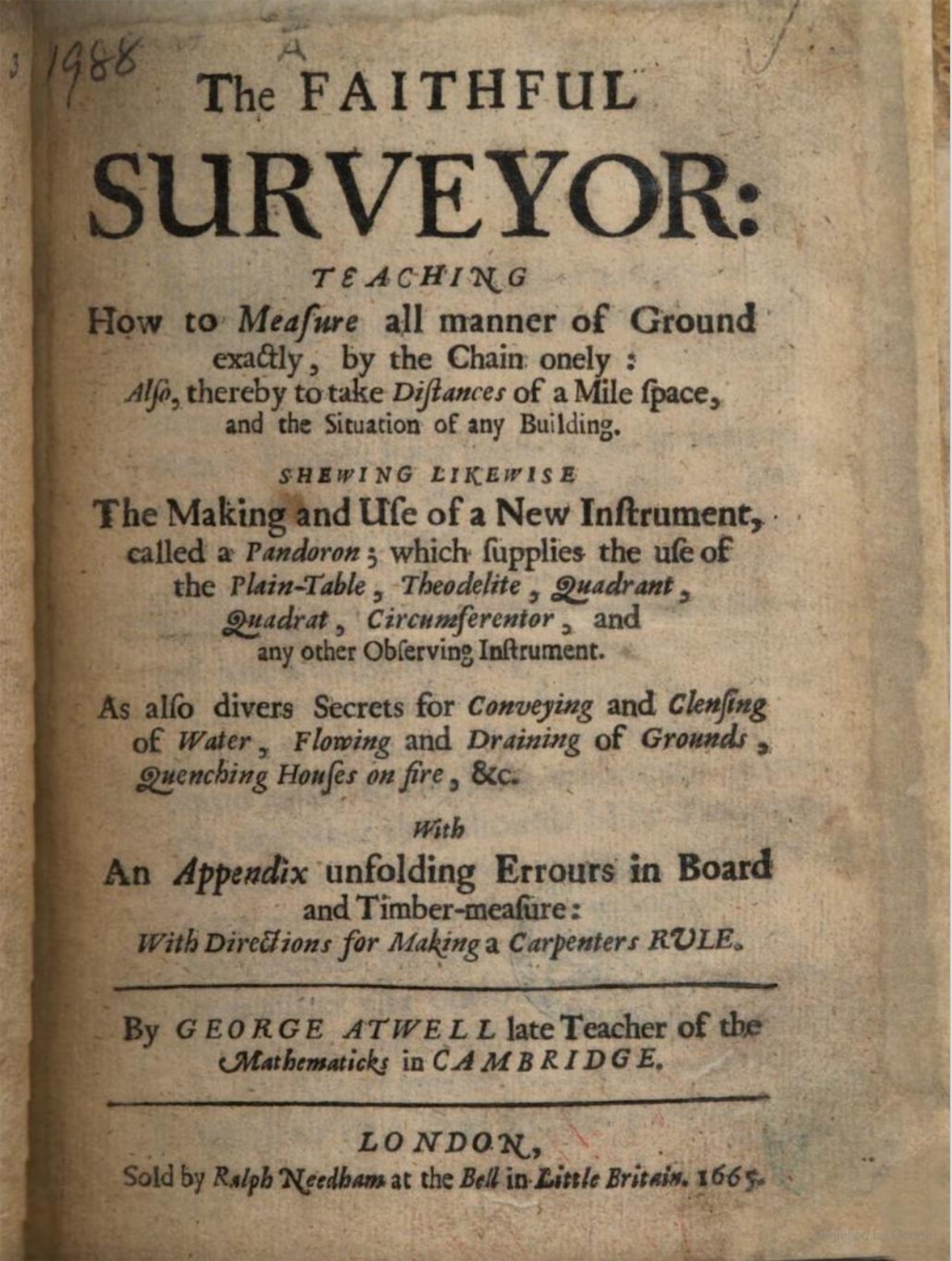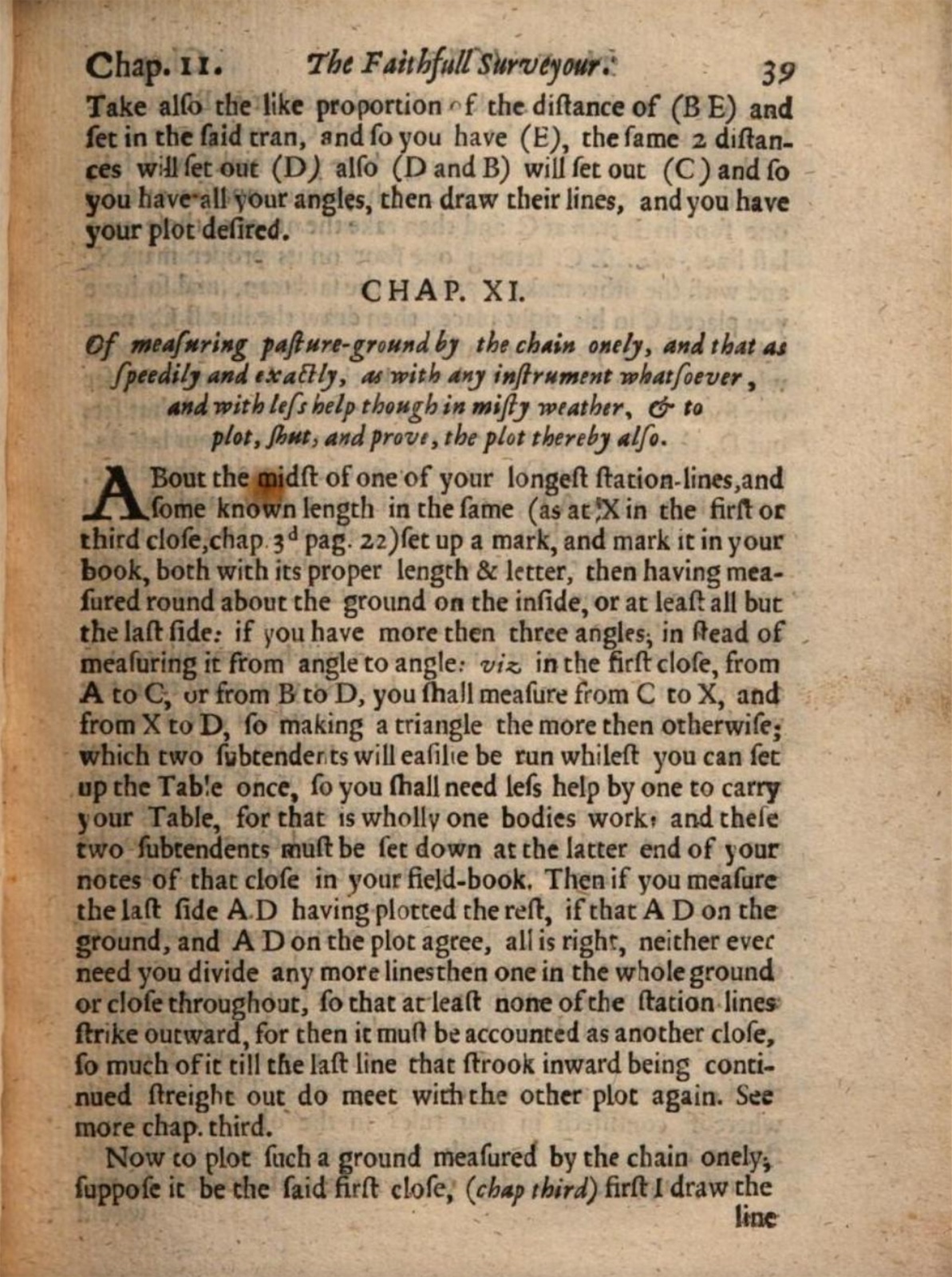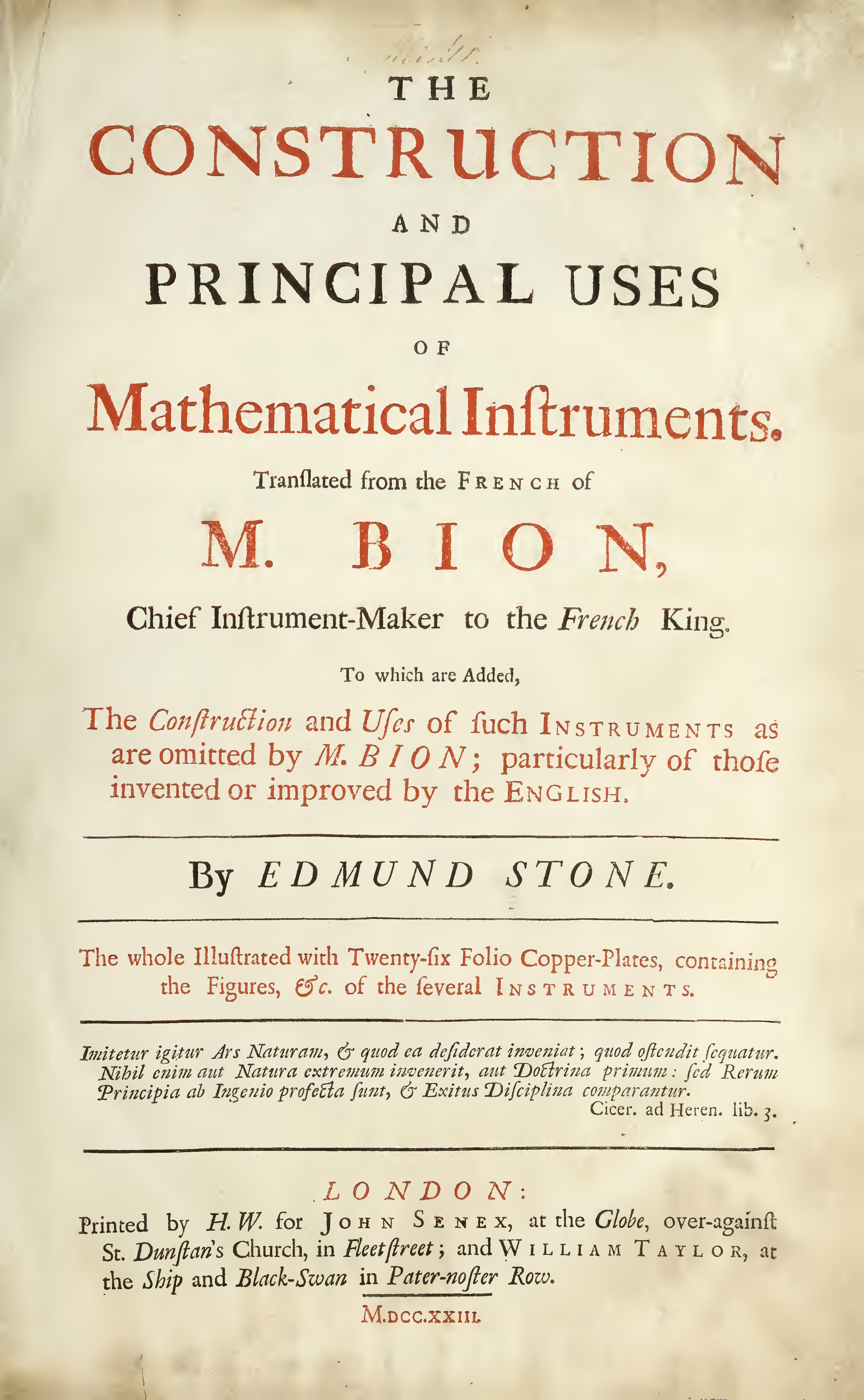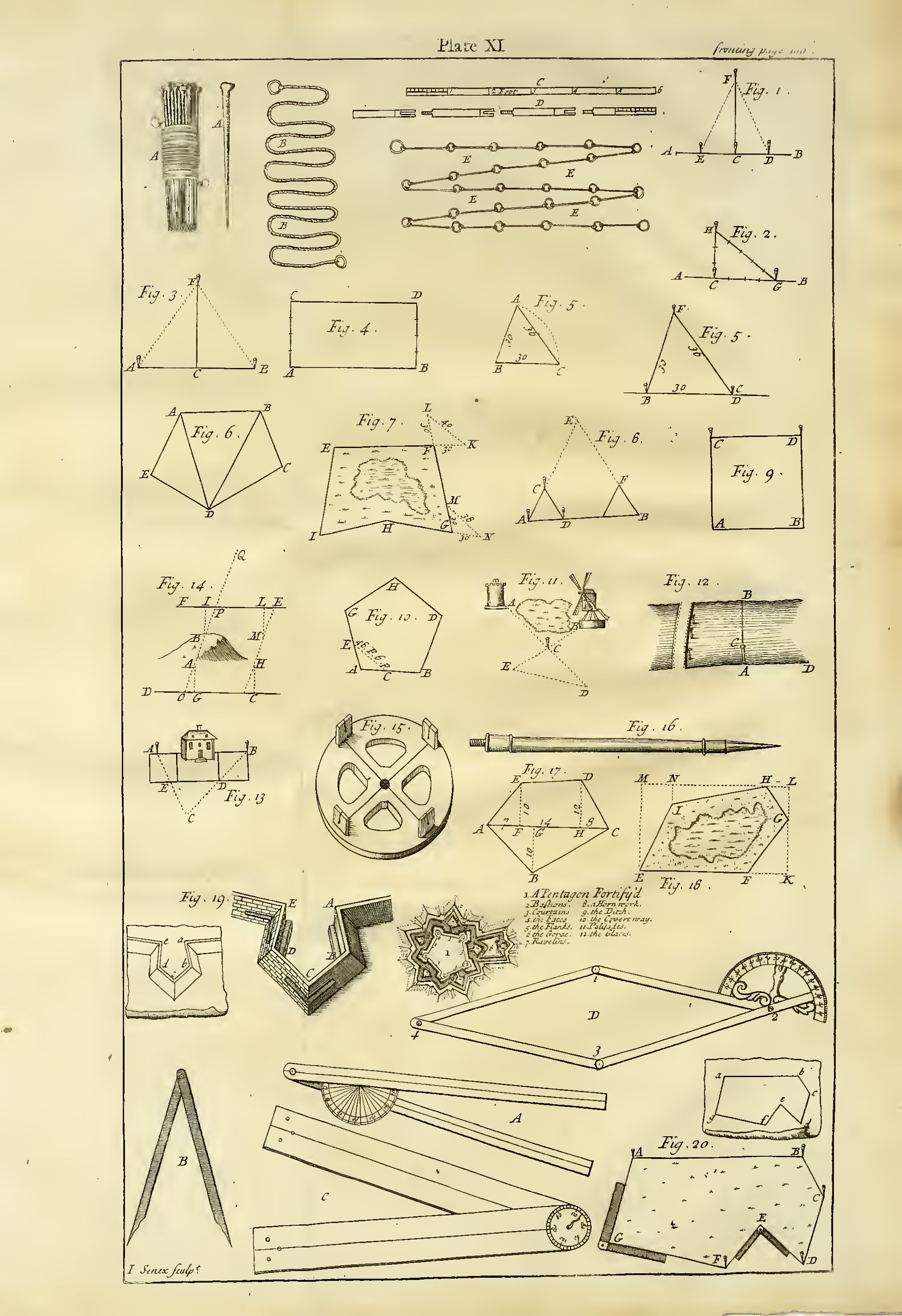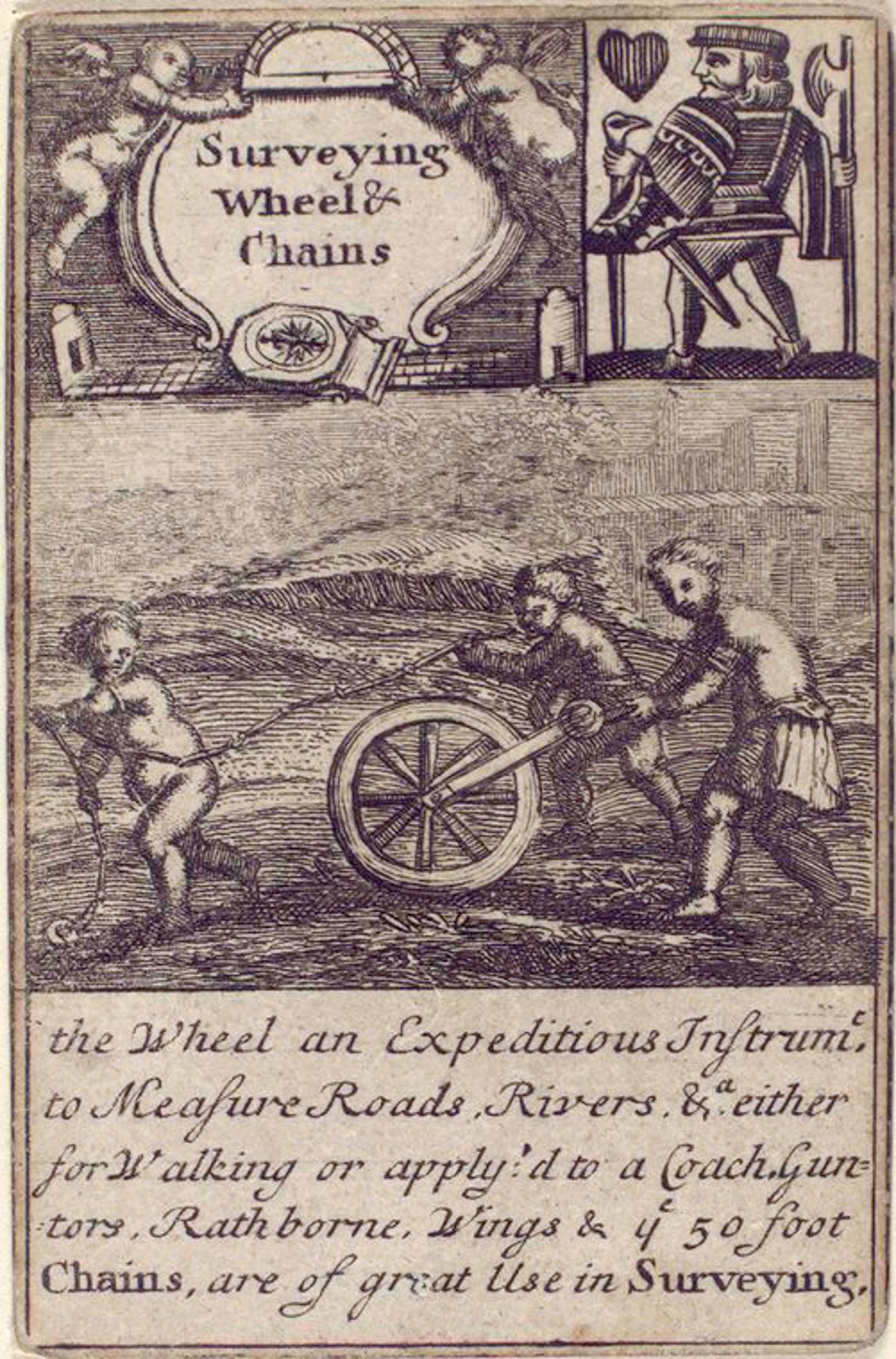
The Perambulator & Chaine Playing Card Circa 1700
Surveying by a Chain or a Perambulator
People have been measuring land for thousands of years. Prior to the late 16th Century, most of the land measuring was done by cords or staffs. Cords and Staffs had significant drawbacks, however. Cords would stretch a good amount fairly quickly, and staff were clumsy to use, at best.
Surveyors started using chains in the at the end of the 16th century, and chains quickly became the surveyors tool of choice for measuring land. Chains can vary quite a bit from country to country, which makes collecting chains both interesting and challenging. In England, for example, the standard chain quickly became a 66ft - 4 Perch Chain (with a Perch being 16.5ft). According to Bion, the standard French Chain circa 1700 was 30ft, while the length of a Perch was 18 feet, but that could be different depending on what was being measured.
Going back to Ancient Greece, surveying of large distances was often done by a wheel that could track distances. In more recent times this wheel was called a Perambulator, Way-Wiser of Hodometer. While simple to use, these surveying wheels were fairly inaccurate as they measured every bump, rut, and valley. But they were better than nothing, and make for a neat collectable if you find an old one in really nice condition.
Chains
As stated above, chains varied a fair amount in length from country to country. Unfortunately I have not seen a country by country analysis of the different types of chains used. I suspect putting something like that would be quite a job.
I'm pretty familiar with American and English chains, so that's what I'm going to focus on here.
If you look at old English surveying textbooks you will see that England surveyors used a fair number of different types of chains from about 1600 to 1750, with the 66 ft Gunter chain becoming the most popular chain by far in the 18th century. My good friend Bob Heggan published a very nice and readable article on the history of chains a few years back. That article discusses the major types of early English Chains: Rathborne, Gunter and Wing. Note that all 3 of these chains are mentioned in the Circa 1700 Playing Card at the top of this webpage. I've searched fairly long for a Rathborne chain, but have never seen one. Wing chains are findable on eBay but few sellers know what they are so you need a keen eye to spot the slightly less than 10 inch links. Gunter chains are very findable and affordable.
If you look for old chains on a regular basis every now and then you will come up with an oddball size, which usually triggers some online research to discover where the chain was used. I came across an oddball chain in South Carolina that featured 4 perches with 16 links per perch. I found a single reference to this chain in Wing's 1664 book, where he stated that some surveyors still used a chain like that. What fun!
Many early authors describe how surveyors could survey land using a chain only (see The Atwood book below). I suspect there were a fair number of surveyors who surveyed using only a chain, as it would be the cheapest way to survey given the expensive of more elaborate instruments like Theodolites, Plane Tables and Circumferentors.

The First Publication Showing a Chain - 1607

66 Foot Gunter Chain - 50 Links Per 33 Feet
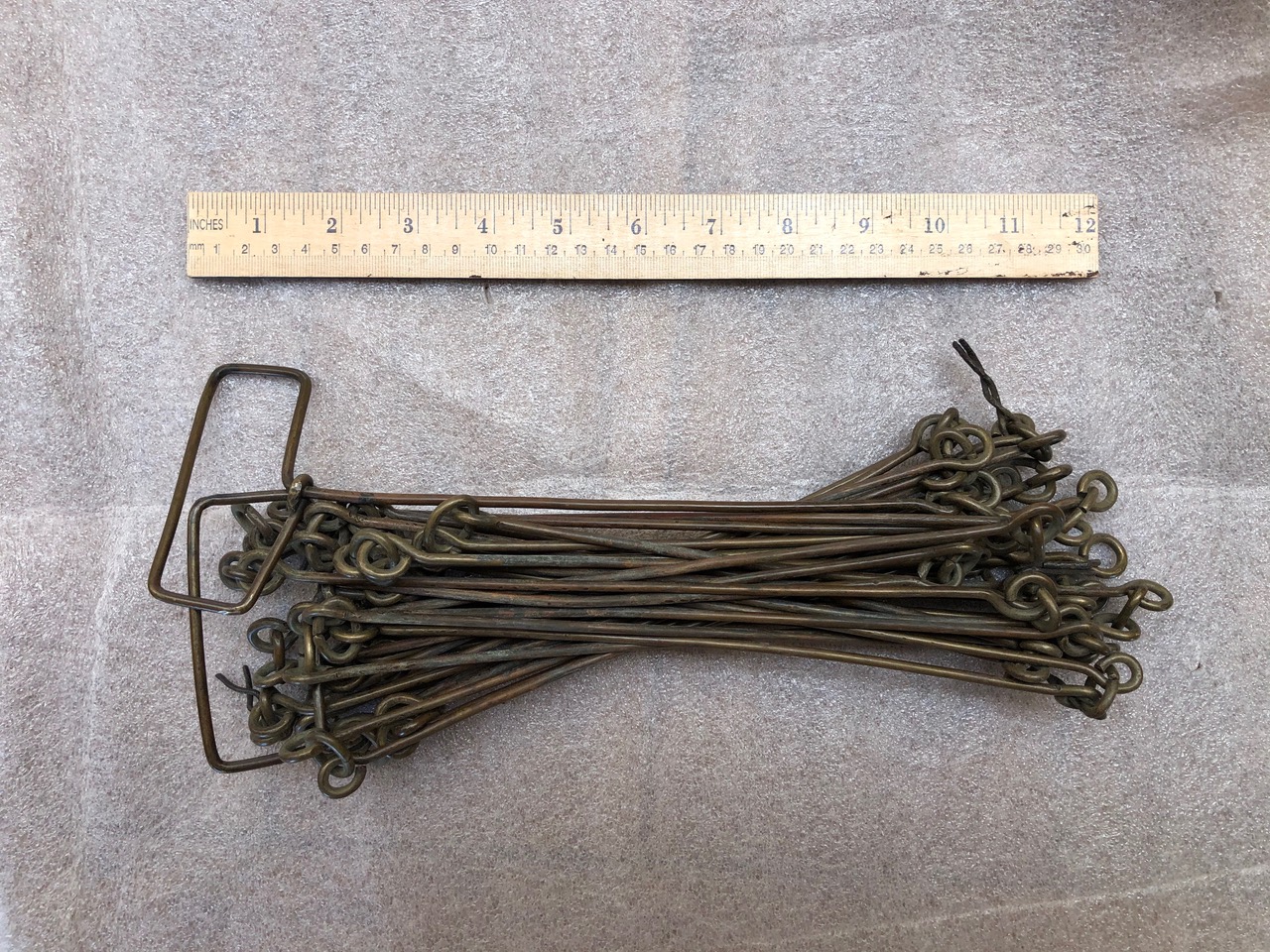
Wing Chain - 40 Links Per 33 Feet
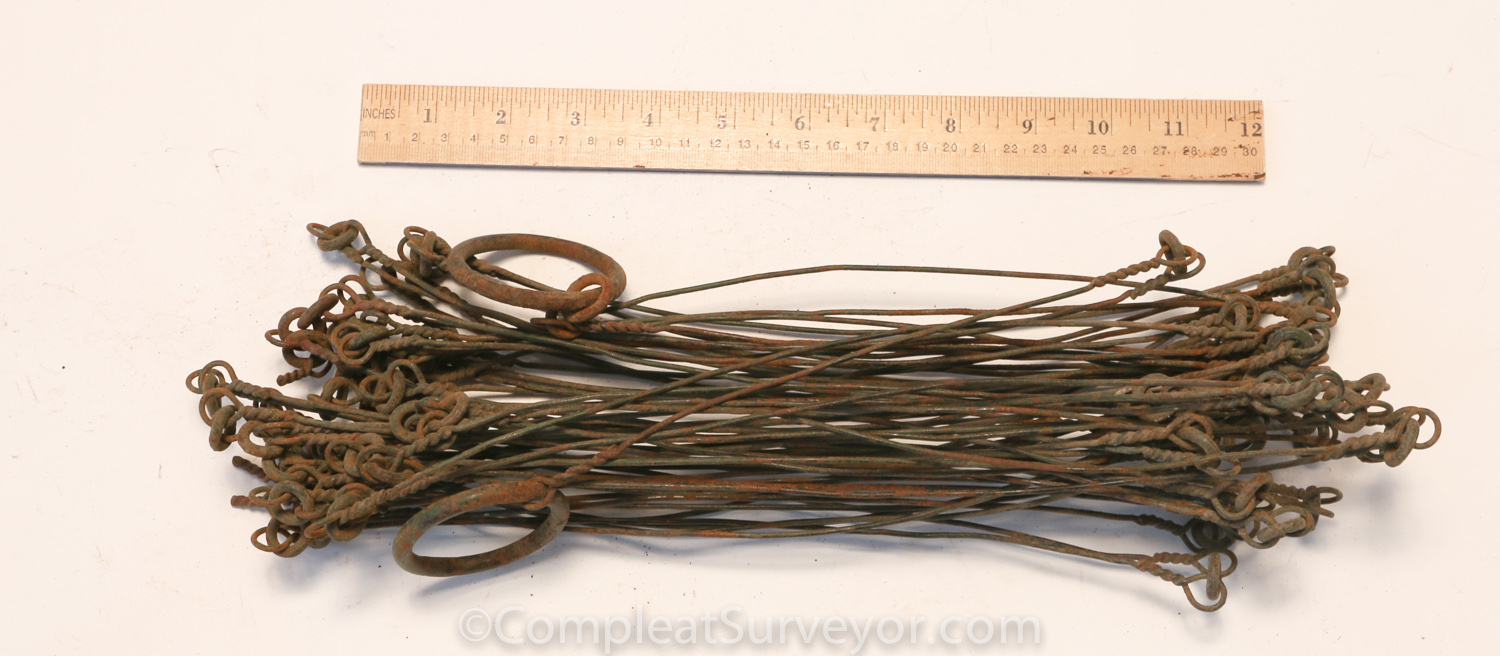
Chain with 16 Links to a Perch
Perambulator
Perambulators were used to measure long distances, like roads. They were fairly inaccurate though, as they increased the linear measure by each mound of dirt or pothole that they rolled over. So what they saved in time they lost in accuracy. But the time savings could be great, especially when the competition was a 66 foot chain. And a single person could use a Perambulator while chain surveying was at best a 2 person job. Thus, Perambulators definitely had a role to play in the history of surveying.
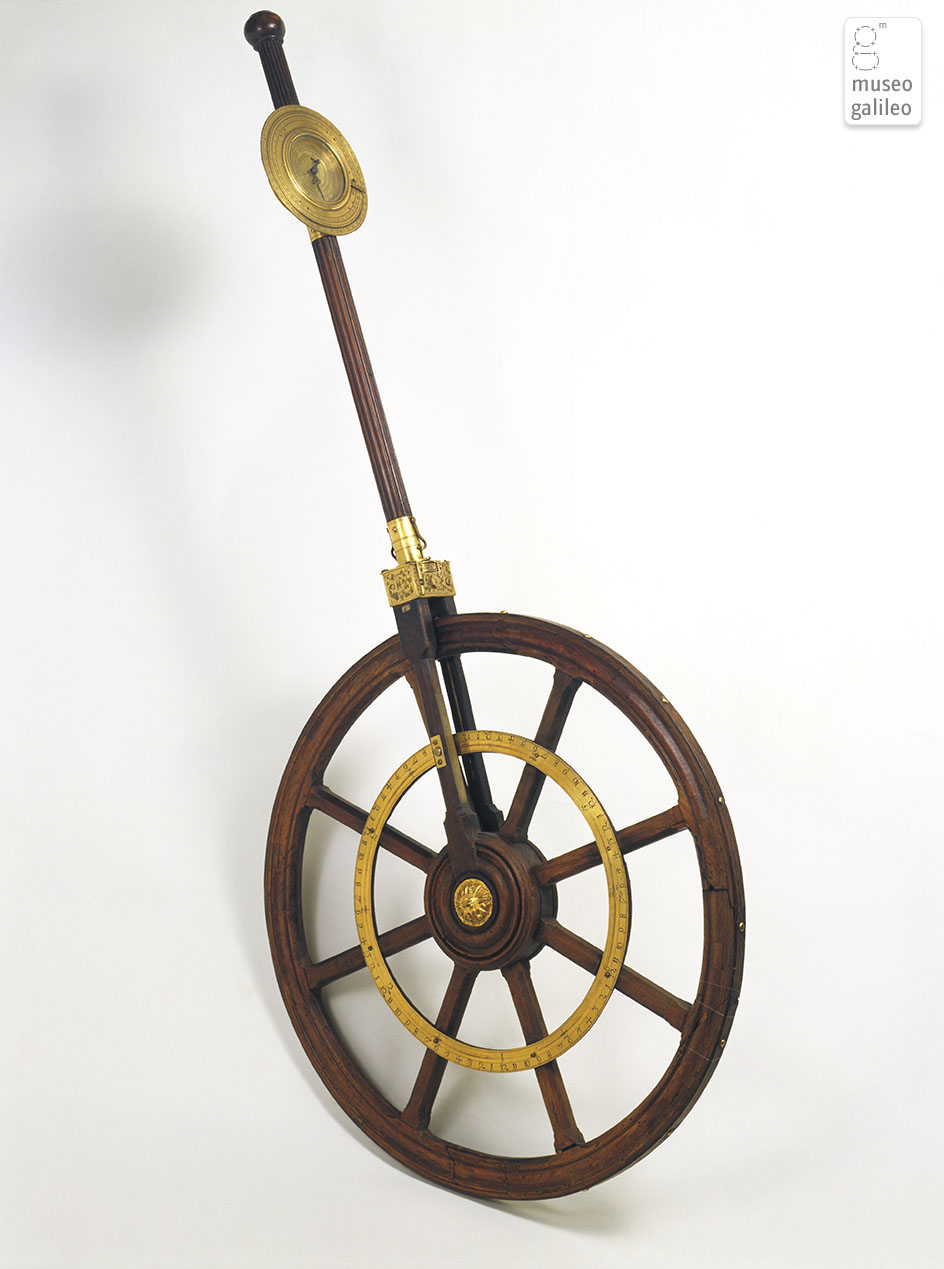
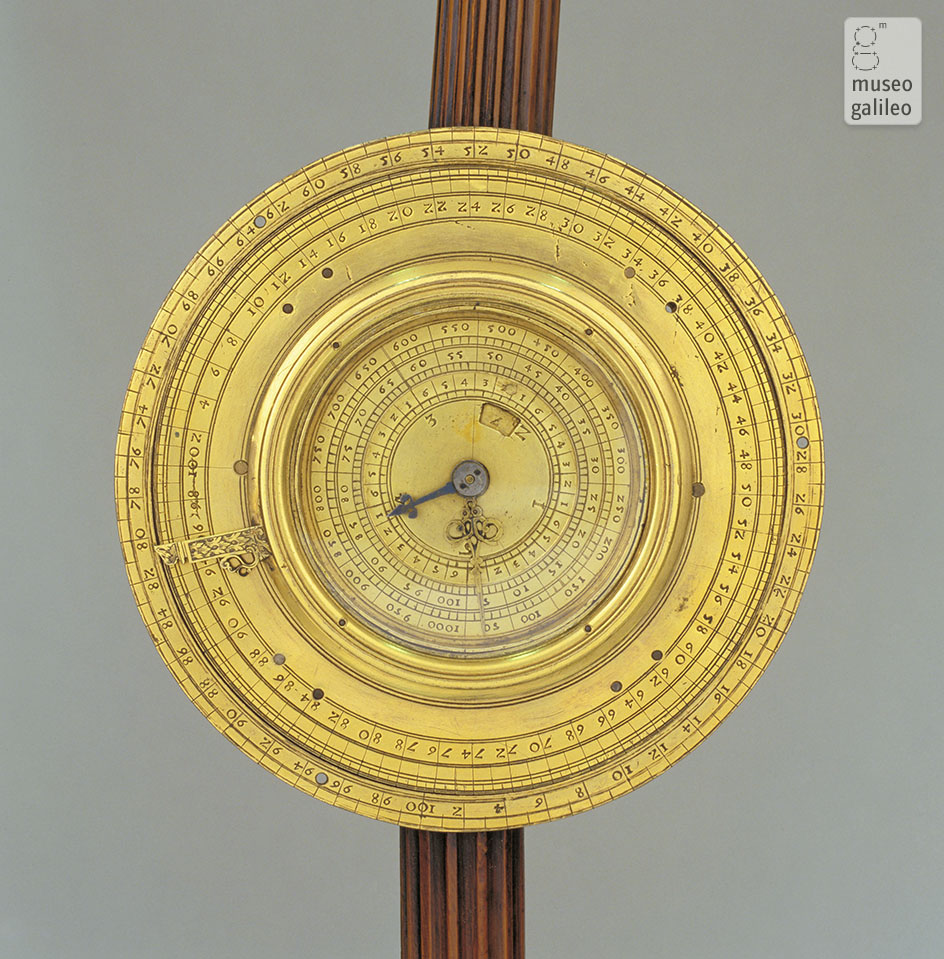

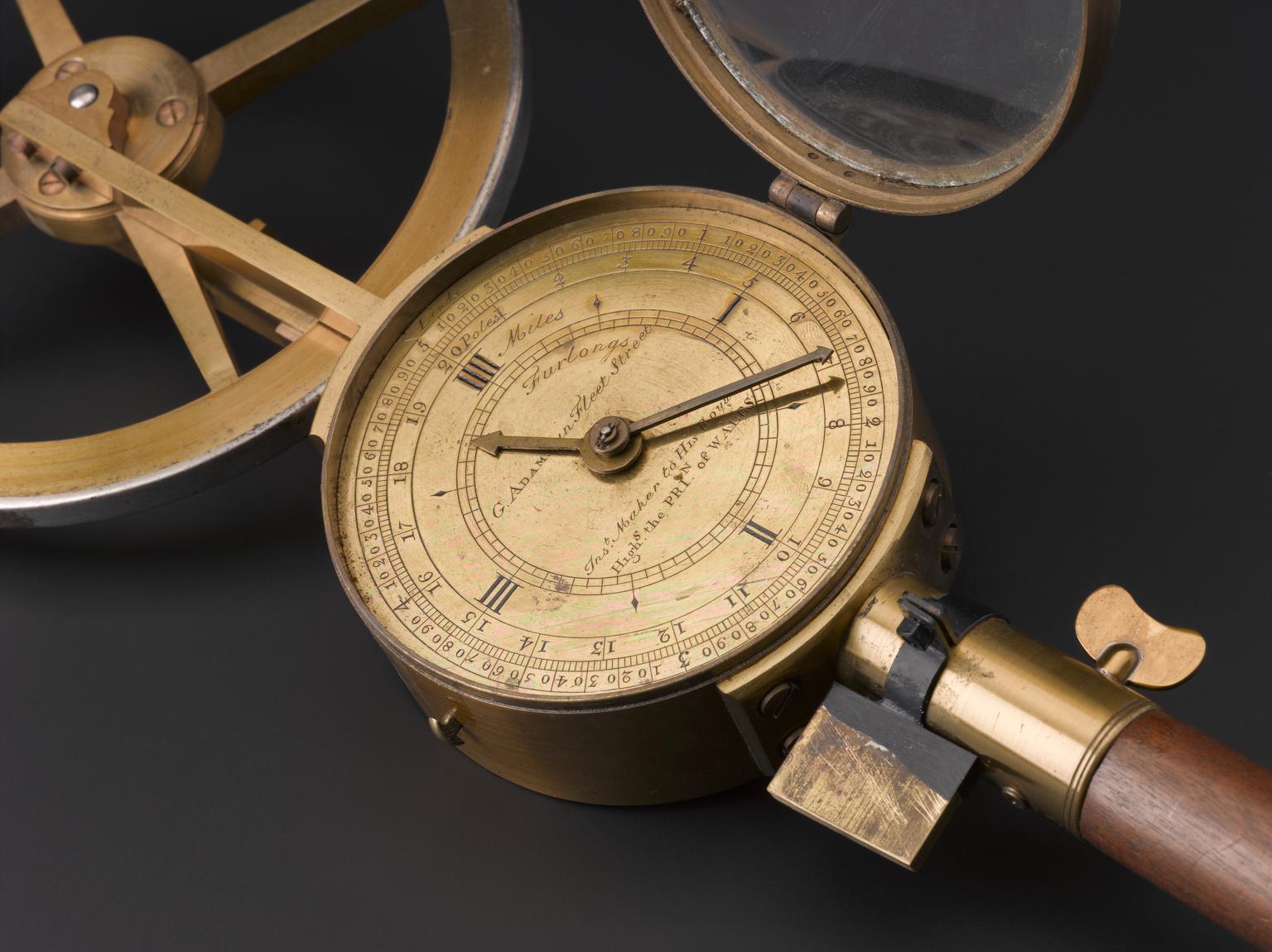
Collectability
I suspect most people who collect chains focus on chains used in their home country. An American collector would likely collect the chains used in America, but may also collect those used early on in England, since many of those chains ended up in America.
Chains are relatively cheap (usually starting at $150 or so), and make for a nice display when added to a surveying instrument like a theodolite, transit or surveyors compass. The key is finding one that is age appropriate to your surveying instrument.
Serious chain collectors typically hunt for different varieties of chains. Half the fun of collecting is trying to figure out where and when the chain would have been used. The oddball 16 links per perch chain I found in South Carolina (see above text) is a perfect example of the fairly cheap entertainment value of looking for and finding different varieties of chains.
As for Perambulators, I've never had one but they are neat looking devices. They seem to run in the $1000 to $1500 range for a nice circa 1800. I suspect the price goes up a fair amount for an older Perambulator, like the late 16th century one shown above. Most of the ones I've seen offered for sale over the years date from 1750 to 1825 or so, however.
Important Books - Chains and Perambulators
Below are some of the important books related to Chains.
The three major early English chains were the Rathborne, Gunter, and Wing chains. Each of these three authors described their chains in the surveying textbooks they authored. Below I posted PDF copies of the Rathborne and Gunter works describing the their chains. Unfortunately the Wing book has not been digitized yet.
I also posted the 1982 Whipple Catalogue "The Compleat Surveyor" write-up on chains and perambulators, as well as Stone's 1723 translation of Bion's book on instruments. That book discusses the French version of the Surveying chain, which has a different length than the chains used in England at the same time.
Finally, I include Atwell's 1665 text that describes how to conduct a survey using only a chain. There were actually a fair number of textbooks that describe how to survey using only a chain, so the Atwell book is simply representative of a good number of there books.
Wing's Art of Surveying (1664) - 66ft Chain & 80 Links
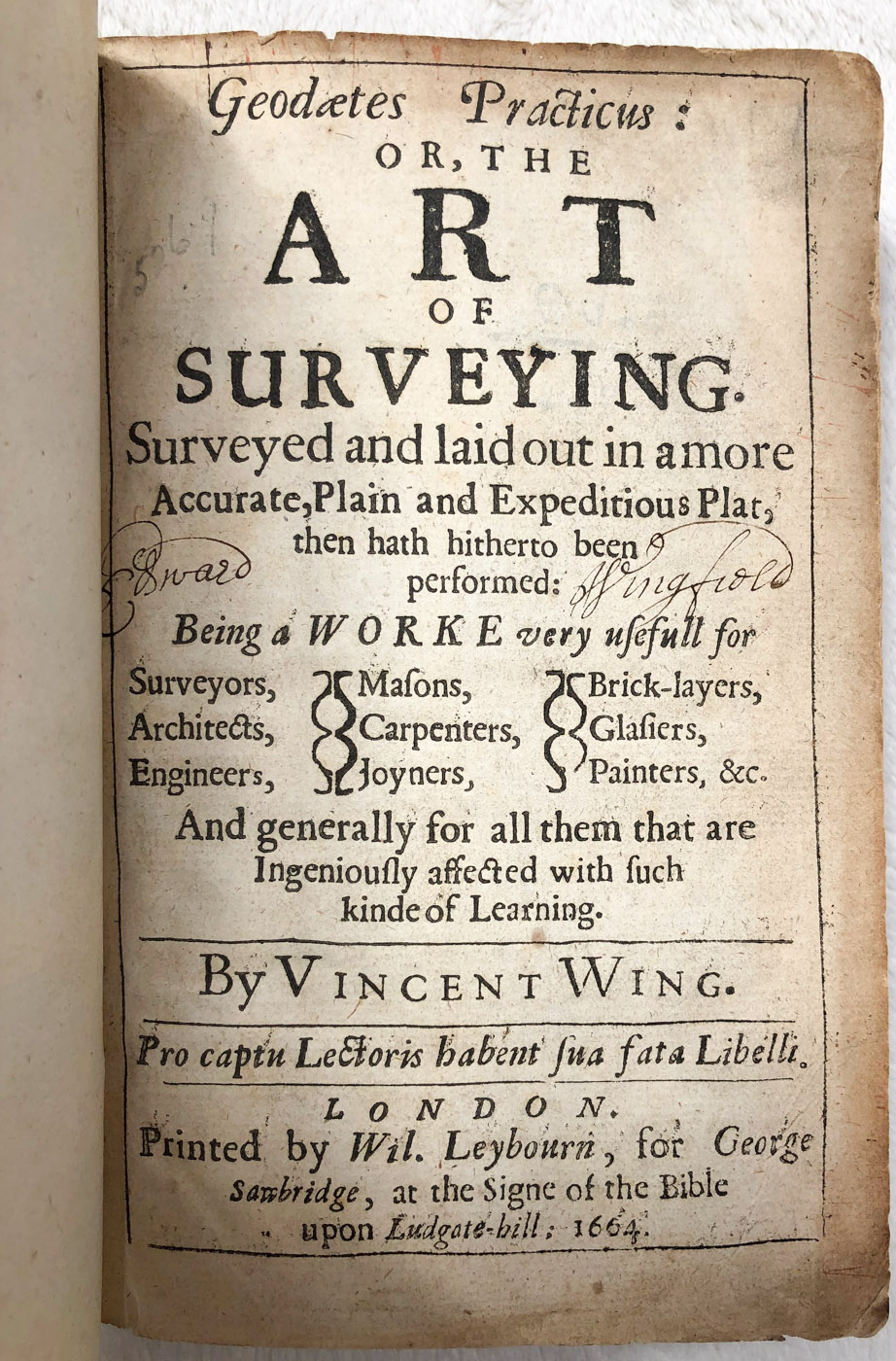

My Reference Materials
Here are the main reference books I used while researching my Ancient Surveying Webpages:
5-Volume Catalogue Of The Most Important Worldwide Private Collection Of Scientific Instruments (With 928 Color Illustrations). Written in German, but an amazing reference tool. The pictures are incredible - most of the instruments are not found on the internet. Crazy Expensive.
Bennett's Catalogue of Surveying and Related Instruments (2022). Fantastic pics and info about the surveying related instruments at the Galileo Museum (which has an INCREDIBLE collection of early instruments).
Bennett's The Divided Circle (1987). A History of Astronomy, Navigation and Surveying Instruments.
Delalande Antiques Two Volume book series on Astrolabes. The two volumes walk you thru how to use and collect Astrolabes. A must have if you want to collect Astrolabes.
Kiely's Surveying Instruments - Their History (1947) Somewhat dated now, but still has a great deal of relevant information. Not the easiest read, however.
Daumas' Scientific Instruments of the 17th and 18th Centuries (Translated into English 1972).
Richeson's English Land Measuring to 1800 (1966). A nice book that is mis-paginated unfortunately. But still contains some good information about early English land surveying.
Important Websites where you can use the search function (e.g. "Theodolite") to find instruments:
The Museo Galileo Virtual Museum - A Stunning Collection of Early Surveying Instruments
The Science Museum Group (UK Based)
Harvard University Collection of Scientific Instruments
The Museum of History and Science, Oxford
© 2020 Russ Uzes/Contact Me


